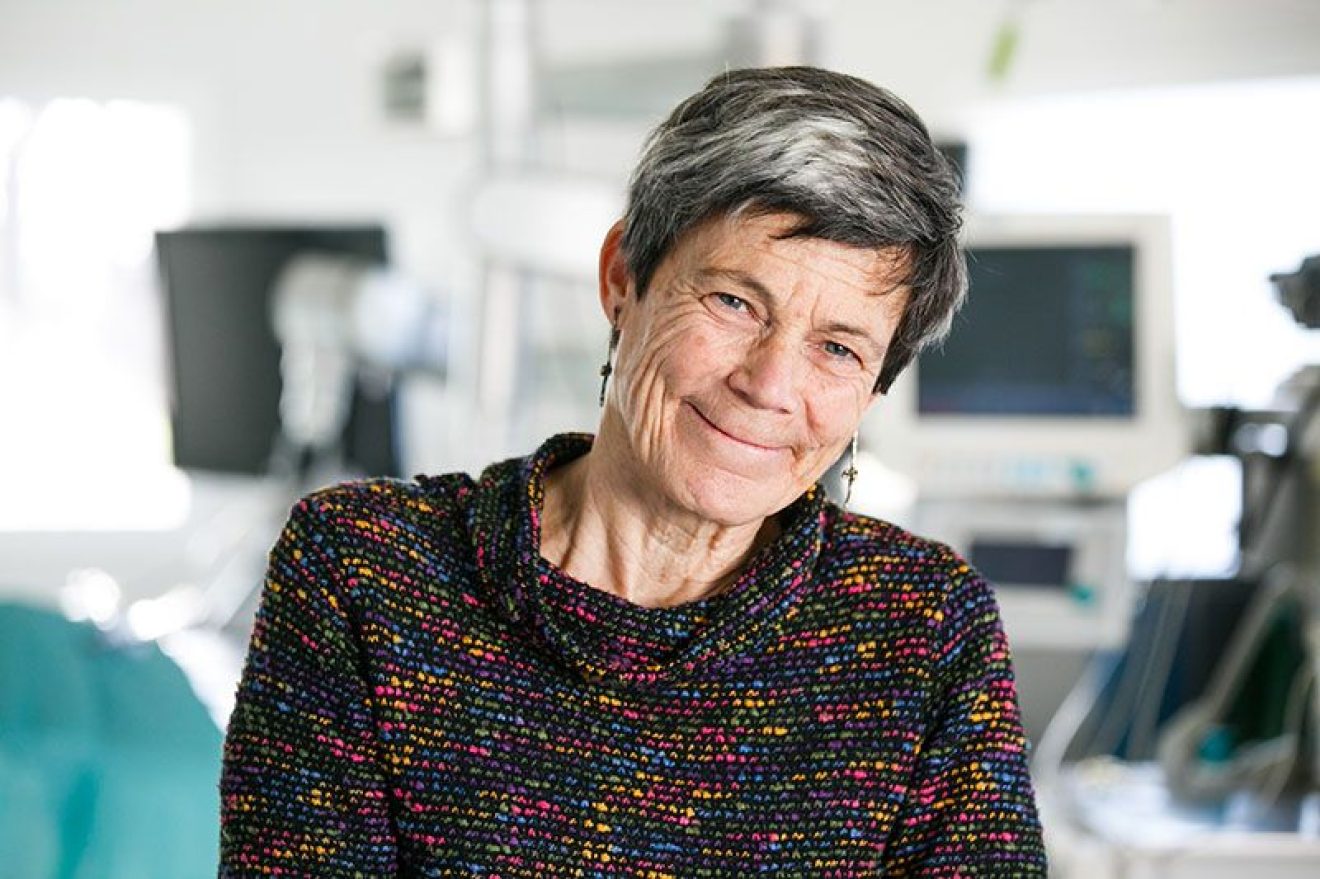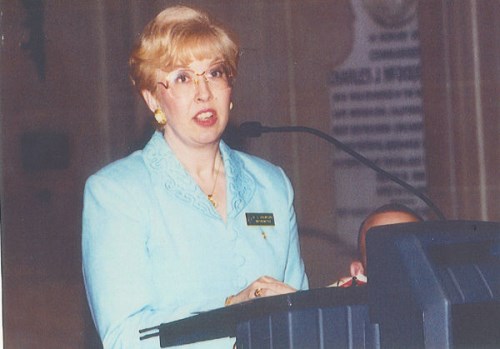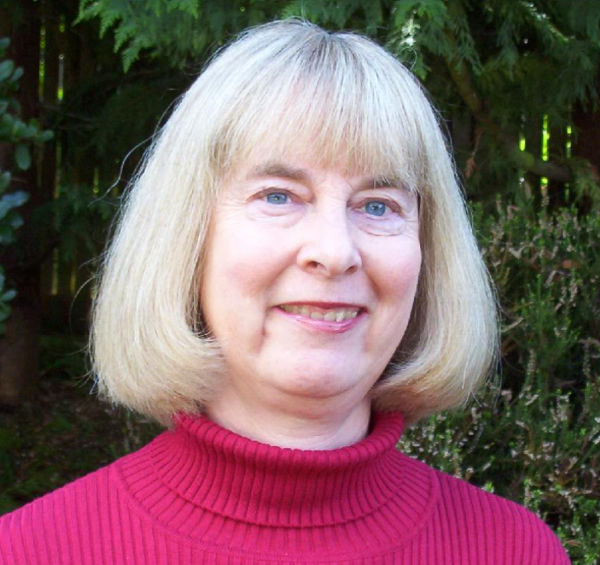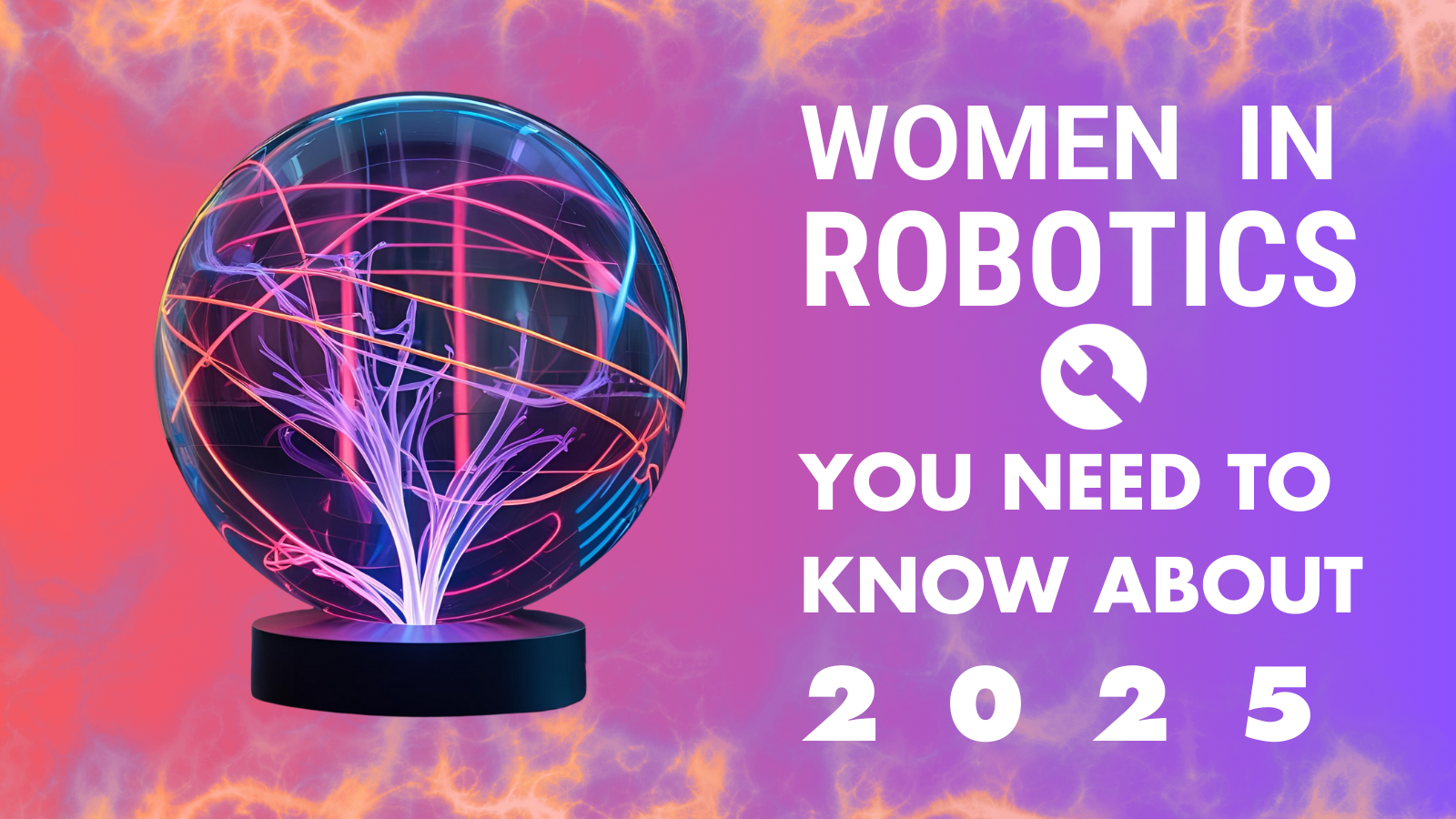The Women of ICRA 1984

The first International Conference on Robotics and Automation was held in Atlanta Georgia from March 13-15 1984 and you can still read the proceedings of the conference here. Many of the 1984 authors are still very well known in robotics, for example, Joseph Engelberger, Marc Raibert, Ron Fearing, and Ruzena Bajscy. Perhaps less well appreciated is the fact that of the 75 papers, at least 7 authors were women:
- Alicia Casals * 2014
- Carol Crawford * 2024
- Dianne E. Britton * 2024
- Eleanor G. Wells * 2024
- Linda Shapiro * 2024
- Susan Hackwood * 2024
- Ruzena Bajscy * 2014
Both Alicia Casals and Ruzena Bajscy were featured in our “2014 Women in Robotics You Need To Know About” list, as well as keynoting the ICRA@40 celebrations in Rotterdam in September 2024. The other five women are part of our 2024 Women in Robotics list, and we’ll be sharing parts of the 2024 list all the way through October.

Professor Alicia Casals is the head of the reseach group on Robotics and Compute Vision of the Center of Research in Biomedical Engineering (CREB) at UPC, the Technical University of Catalonia. Casals is also the cofounder of two companies in medical robotics, turning research robots into real products. Since featuring in our “2014 Women in Robotics You Need To Know About” list, she was interviewed by Selma Sabanovich for the Engineering and Technology History Wiki and the IEEE RAS Robotics History Project, and in 2022 she received the Honor Medal from the Xarxa Vives d’Universitats, the network of 22 universities from the Catalan Countries.

Dr Carol Crawford’s areas of research included robotics, artificial intelligence and computer vision. Her research was supported by grants from the Federal Bureau of Investigation, the Office of Naval Research and NASA. She was one of only 20 scientists in the nation to be choses as a NASA research fellow at the Johnson Space Center. Crawford earned a PhD in mathematics with distinction from Georgetown University, before becoming a full professor of mathematics at the United States Naval Academy in Annapolis, MD. She was selected as a Fellow of the Institute for Combinatorics, Canada and was named Professor Emerita, Mathematics on retirement after almost 30 years at the United States Naval Academy.
![]()
Sadly we couldn’t find any information about Diane E. Britton or Eleanore G. Wells, except for their affiliation with RCA Laboratories. They are two of the authors of the ICRA 1984 paper on Coordination Software for Robotic Workcells. ICRA 1984: 354-360: Henry S. Baird, Eleanore G. Wells, Dianne E. Britton. Please let us know if you have more details.

Linda Shapiro, Professor of Computer Science and Engineering, Professor of Electrical and Computer Engineering, and Adjunct Professor of Biomedical and Informatics and Medical Education, earned a bachelor’s degree in mathematics from the University of Illinois in 1970 and master’s and Ph.D degrees in computer science from the University of Iowa in 1972 and 1974, respectively. She was a faculty member in Computer Science at Kansas State University from 1974 to 1978 and at Virginia Polytechnic Institute and State University from 1979 to 1984. She then spent two years as Director of Intelligent Systems at Machine Vision International in Ann Arbor, Michigan. She joined the University of Washington Electrical Engineering (now ECE) Department Department in 1986 and the Computer Science and Engineering Department in 1990.
Professor Shapiro’s research is in computer vision with related interests in image and multimedia database systems, artificial intelligence (search, reasoning, knowledge representation, learning), and applications in medicine and robotics. She has worked heavily in knowledge-based 3D object recognition and has contributed to both the theory of object matching and to the development of experimental machine vision systems.
Her current work includes robot vision, cancer biopsy analysis, brain image analysis, and semantic segmentation. Professor Shapiro was the editor-in-chief of Computer Vision, Graphics, and Image Processing for 10 years. She was the 1993-95 chair of the IEEE Computer Society Technical Committee on Pattern Analysis and Machine Intelligence, conference chair of the 1986 IEEE Conference on Computer Vision and Pattern Recognition, co-program chairman of the 1994 conference, and co-chair of the 2008 conference. She was also the co-chair of the Biomedical and Multimedia Applications Track of the International Conference on Pattern Recognition in 2002. She has co-authored a textbook on data structures, a two-volume graduate text on computer and robot vision, and an undergraduate computer vision text. She is a Fellow of the IEEE and of the IAPR.
https://youtu.be/ovEVHV2vGNY?si=BisHhiYZ4lUEwrJm

Professor Emeritus Susan Hackwood is a Senior Policy Fellow at the School of Public Policy and Director of the Science to Policy (S2P) program at the University of California, Riverside. Prior to her current role she served as Executive Director of the California Council on Science and Technology (CCST) for over two decades, advising the state on various aspects of science and technology, including biotechnology, nanotechnology, climate change, disaster prevention, technical workforce development and education.
Hackwood gained her Ph.D. in Solid State Ionics from DeMontfort University, UK and has held various positions in industry and academia. She was the Department Head of Device Robotics Technology Research at AT&T Bell Labs, where she invented and named the electrowetting effect. Later she joined the University of California, Santa Barbara, where she founded the National Science Foundation Engineering Research Center for Robotics Systems in Microelectronics.
As the founding Dean of the Bourns College of Engineering at UC Riverside, she founded the Center for Environmental Research Technology and pioneered research in swarm intelligence technologies. She is a Fellow of the IEEE and the AAAS, and she works closely in partnership with industry, academia and government to address policy issues of societal importance.
https://youtu.be/qv_BKB6tL84?si=AmECLOWz1_jRum_S

Throughout her long and influential career, Ruzena Bajcsy has been a pioneer in machine perception, robotics, and artificial intelligence, introducing entire fields that today are taken for granted as important research areas. She is particularly well known for two concepts. The first, known as “active perception,” revolutionized robotic vision and sensing. Until 1988, the paradigm in robotic vision was to interpret what one was perceiving based on the composition and computer analysis of a few images taken from static cameras and sensors. Bajcsy suggested that the more effective method of moving the sensors would help the machine gather more information and the sensors, in turn, could help streamline movement. This paradigm of vision as an active process has become the leading theory in understanding human vision as well—emphasizing the surprising cross-disciplinary nature of much of Bajcsy’s work.
The second contribution for which Bajcsy is well-known, elastic matching, has transformed medical imaging. This work matches up defined points on anatomical structures and organs to automatically align, measure, and analyze the uniquely-shaped body parts of any individual. By elastically massaging such “deformed” images to match idealized medical images, a computer can identify body parts and help spot anomalies or problems. This has particularly influenced non-invasive measurements of brain structure and function.
Bajcsy’s awards include: the Allen Newell Award, the Computing Research Associates Distinguished Service Award, the IEEE Innovation in Healthcare Technology Medal, and the ACM Distinguished Service Award. She is a member of the National Academy of Engineering and the National Academy of Science Institute of Medicine. In 2002, she was named one of the 50 most important women in science by Discover Magazine. In 2009, she became a Benjamin Franklin Medal Laureate, in 2022, she received the Slovak Medal of Honor .
“Many people think of robotics as mechanical things, but robotics is also perception – and communication between machines.” – Ruzena Bajcsy
At a time when robotic science concretely divided research subjects between planning, sensing, and control, Ruzena Bajcsy insisted on bringing the disciplines together. Bajcsy realized that in order for robots to perceive their surroundings effectively they needed to act more like humans. Instead of thinking of sensing as a passive process where images and sensor measurements were acquired by static sensors, she developed robots that improved their perception of the world by actively moving their cameras and sensors and by reaching and touching. (Computer vision could not be improved, for example, by mere analysis of a static image–—instead sensors needed to move around, change their focal length or change the lighting to gather as much data from as many perspectives as possible). It seems self-evident now, but in the 1980s when Bajcsy first suggested the concept of “active perception,” it revolutionized the robotics field. Later, she drew upon similar cross-disciplinary research—including computer science and biomechanics – to overturn the way software analyzed and manipulated medical images.
Ruzena Bajcsy received her master’s and Ph.D. degrees in electrical engineering from Slovak Technical University in Bratislava in 1957 and 1967, respectively. During this time she also taught math and computer science there. Bajcsy went on to Stanford where she earned a Ph.D. in computer science in 1972 with John McCarthy has her thesis advisor. She became an assistant professor at the University of Pennsylvania in 1977, and was chair of the computer and information science department 13 years later—the first woman in that position. In 1979 she founded the General Robotics, Automation, Sensing and Perception (GRASP) Lab at Penn, which remains a major lab in the field even after her “retirement” in 2001. Subsequently, Bajcsy spent two years working for the NSF before founding UC Berkeley’s Center for Information Technology Research in the Interest of Society [CITRIS], where she is now director emeritus. You can learn more about Bajscy in the IEEE Robotics History Project.
https://www.youtube.com/watch?v=r0fQR4ECigw
The women we feature show that glass ceilings are made to be broken, but those women who we can’t find or feature show that a career in robotics is still very far from easy. Our latest research dug deep into statistics about women in robotics across all of the STEM fields and found that it’s still not a great career choice for women. Women that are still in robotics after 15 years are exceptional exceptions!



